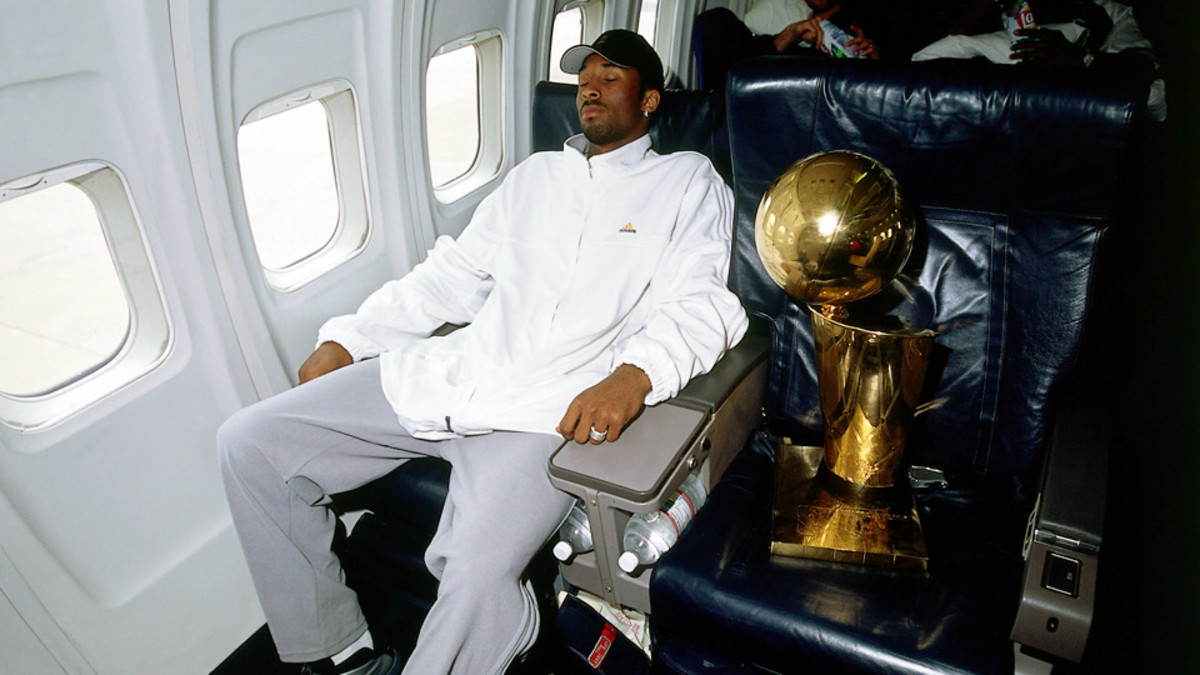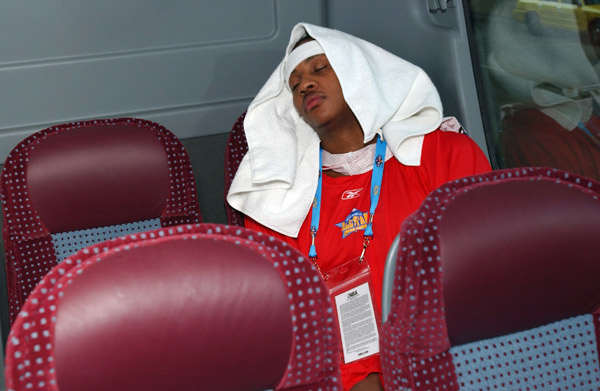
Z's = W's: Want to Max Out Your Performance? Take a Nap
Legend has it that the morning shootaround was introduced by the Lakers in the 1970s in an attempt to curtail Wilt Chamberlain's nightly escapades, which have their own place in folklore. But maybe the team should have been trying to keep Chamberlain in bed rather than get him out of it. A morning practice after a night game isn’t just a buzzkill—it disrupts a player’s sleep schedule, according to Dr. Charles Czeisler, director of the division of sleep medicine at Harvard Medical School.
Czeisler, a.k.a. the Sleep Doctor, says that the U.S. as a whole suffers from a “staggering amount of sleep deficiency.” Two million Americans fall asleep behind the wheel every week. Coffee, manna to the fatigued, is consumed at a rate of 587 million cups a day in the U.S., tops in the world.
“Sleep debt,” as researchers call it, is especially tough on professional athletes, whose exhaustive workouts often require more sleep for recovery and whose travel-heavy schedules cause them to get less sleep than most other people. Czeisler has worked as a consultant to the Trail Blazers, Celtics and Clippers (as well as NASA and the Secret Service) trying to help them understand that more Z’s can lead to more W’s. He has altered teams’ travel schedules, eliminating cross-country red-eyes; changed practice times to help alleviate jet lag; and instituted a “2 a.m. rule,” which forbids a team from traveling to its next game if the hotel can’t be reached by that hour. Czeisler has also encouraged players in Portland to stay up until the wee hours on East Coast road swings to maintain normal sleep patterns. And he’s a big proponent of naps (as are several NBA stars, including LeBron James and Kobe Bryant), encouraging light sleepers to sneak in rest whenever they can.

Carmelo Anthony sleeps on the bus on the way to the Sophomore Team Practice during NBA All-Star Weekend in February 2005.
Andrew D. Bernstein/NBAE via Getty Images
The Price of Sleep Debt
• Slower reaction time | • Decreased precision | • Poor balance and coordination |
• Missed signals in your visual field | • Increased irritability | • Greater propensity for getting sick |
• More inflammation; slower healing from injuries | • Duller memory | • Burnout, exhaustion and depression |
Sleep might seem like a footnote to the story of a player’s development, but it’s a booming topic in the sports analytics community. Czeisler presented at the 2014 MIT Sloan Sports Analytics Conference in Boston last month, preaching the value of sleep to curious stat heads. The doctor says athletes should sleep about 8.2 to 8.4 hours per 24—a total that, he estimates, “only a fraction” of NBA players reach. With sleep deprivation comes decreased performance (right), a correlation that is no longer going unnoticed. Adam Silver, who was in attendance at Sloan, says he is “fascinated” by Czeisler’s studies. Admits the NBA’s new, possibly overworked commissioner, “I’m generally sleep-deprived.”
1. Establish a sleep routine
Going to bed and waking up at around the same time every day is paramount to a healthy lifestyle. “I can’t overemphasize that,” says Czeisler.
2. UNPLUG AT NIGHT
The bedroom should be sacred, Czeisler says. “Only sleep and sex. Not paying your bills or checking your email.” Get over FOMO—fear of missing out—and put electronics away.
3. SHOOT FOR 9 HOURS IN THE BEDROOM
Czeisler says that the optimal amount of sleep for an average person is around 8.2 hours per night, and even higher for athletes going through intense workouts.
4. NAP IN THE AFTERNOON
If you only sleep five to six hours per night, a two- to three-hour snooze in the afternoon could be your savior. If you don’t have that much time, take short naps.
5. DON’T STRING YOURSELF OUT
Lost sleep over days can’t be made up by one long sleep. A person who goes a week with four hours of sleep per night has impairment equivalent to a blood-alcohol level of .1%.




